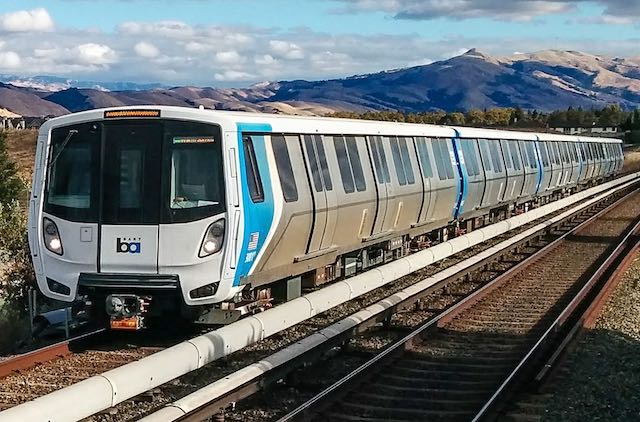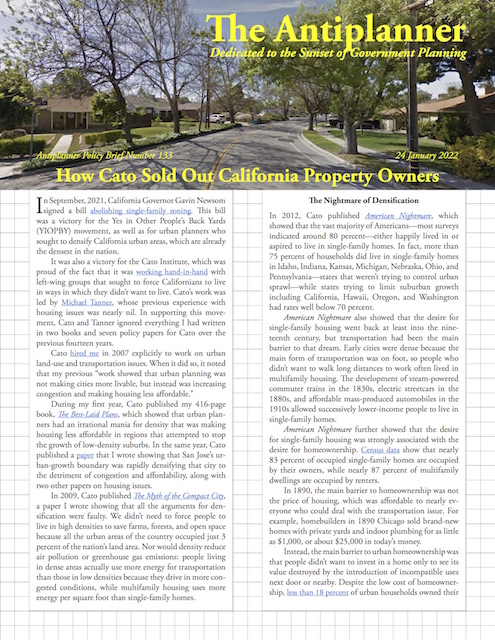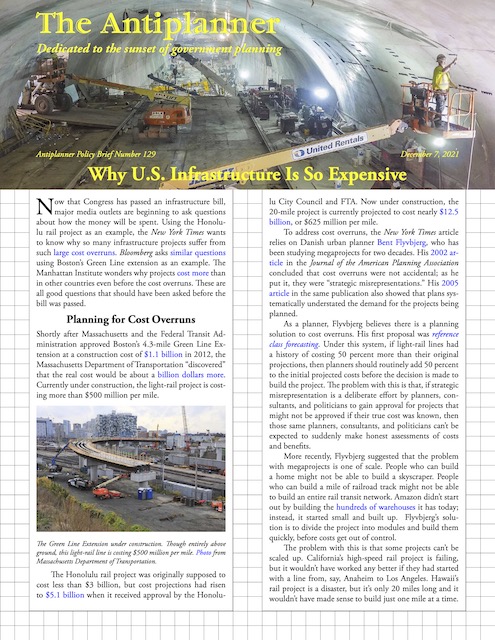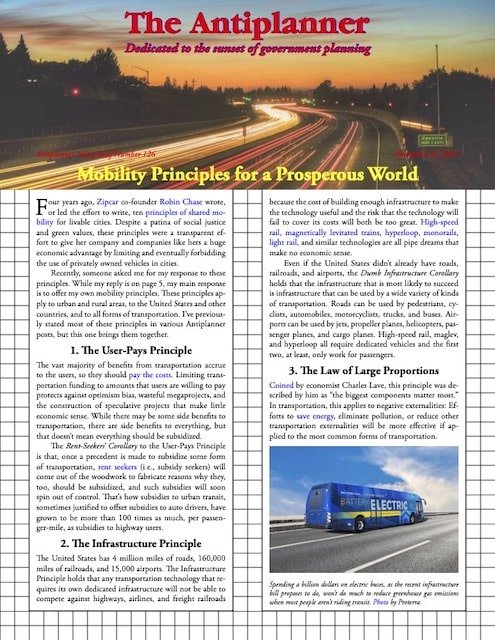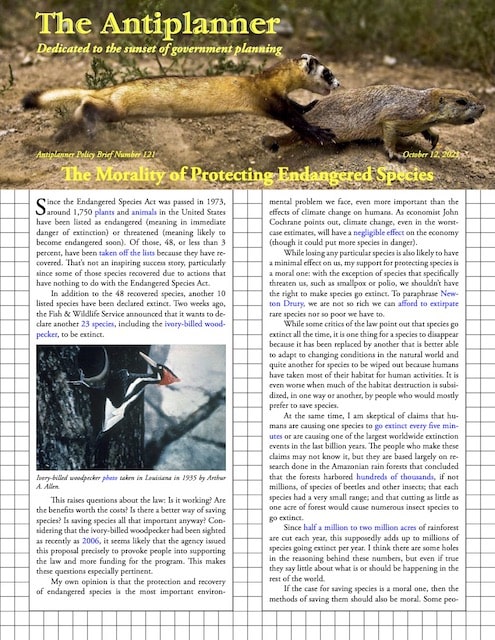After a woman died when she was shoved in front of a subway train in January, New York Mayor Eric Adams announced a major action plan aimed at reducing transit crimes. The weekend following his announcement, at least six people were stabbed on the subway system. A few days after that, a woman was robbed and her skull fractured after being struck with a hammer in a New York subway station. A few hours later, a man was stabbed in the neck at a Brooklyn subway station and someone set fire to a shopping cart in a station in the Bronx.
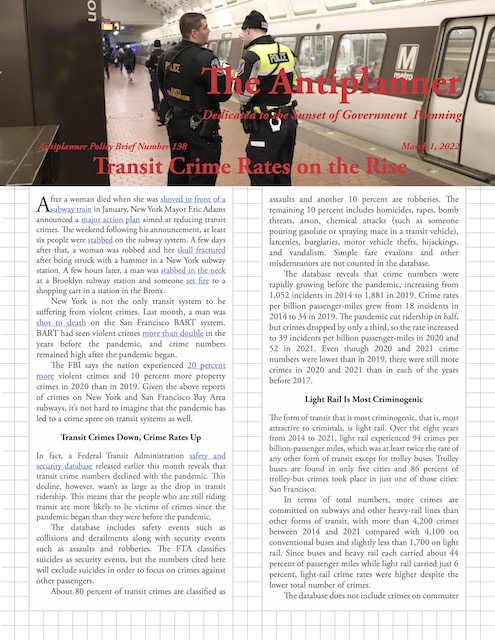 Click image to download a five-page PDF of this policy brief.
Click image to download a five-page PDF of this policy brief.
New York is not the only transit system to be suffering from violent crimes. Last month, a man was shot to death on the San Francisco BART system. BART had seen violent crimes more than double in the years before the pandemic, and crime numbers remained high after the pandemic began. Continue reading

